While these pairings might surprise you, we believe in the old adage that “opposites attract,” and, it’s a surefire way to hit every type you’re buying for: from theorist to practitioner, standard-bearer to trendsetter, and design nerd to—dare it be said—non-designer. You don’t have to be a creative to appreciate these reads. A curious mind will do.
This week: Julie Anixter + AIGA Eye on Design editors. As the executive director of AIGA, the professional association for design, Julie Anixter is the designer’s champion and the profession’s standard-bearer. Together Anixter’s picks provide a history of pivotal moments in which designers instigated whole eras. Each is current, classic, and a study in designer-as-cultural-influencer. If you’ve got that down, then take a detour. Over at AIGA Eye on Design, Perrin Drumm and her team nod to the greats that influence us and then turn their collectively well-trained eye to the young designers ahead of the bell curve. So are you looking for design moments that shook the world or that are off the beaten path? Find both, with inspiration and a touch of creative whimsy this week.
From Julie Anixter
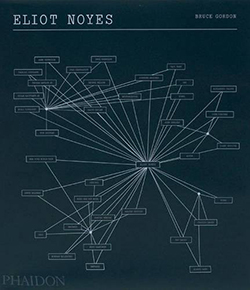 Eliot Noyes by Gordon Bruce
Eliot Noyes by Gordon BruceThis is the first monograph about the seminal architect and designer whose influence is so prevalent that it can’t be distinguished from the way design operates in organizations. Chapter six, on IBM, is worth the price of admission alone because it shows how Noyes devoted a major part of his career to encouraging Tom Watson and IBM “to respect and develop policies rich in cultural expression.” How does a hundred-plus year old company follow that thread? The rest is IBM design history.
 Black Panther: The Revolutionary Art of Emory Douglas
Black Panther: The Revolutionary Art of Emory DouglasArt direct a protest movement? The Black Panther Party for Self Defense was writ large because designer Emory Douglas gave life to Black Panther co-founders Huey P. Newton and Bobby Seale's stance against institutionalized racism. As their newspaper's art director and later the party's Minister of Culture, Douglas created searing images, like Newton with his beret and gun, set against a background of a blood-red star. That image blanketed neighborhoods during the 12 years the paper existed, and incited a generation.
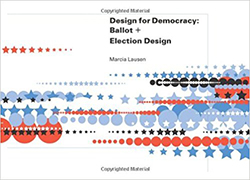 Design for Democracy by Marcia Lausen
Design for Democracy by Marcia LausenLausen’s work bisects design and civic engagement, and in the service of voting, she took on service design before it had a name. After the "hanging chad" debacle of the 2000 Presidential election, Lausen undertook an examination of how to improve the utility of our nation's varied—and, in some cases, shockingly bad—voter materials. Seven years later she published this textbook for designers, election officials, lawmakers, and citizens. Would that it was more widely used.
 Design and the Elastic Mind by Paola Antonelli
Design and the Elastic Mind by Paola AntonelliIn 2008 Paola Antonelli curated the widely regarded “Design and the Elastic Mind,” exhibit at MOMA, publicly “anointing designers as translators and humanizers of complexity." The book documents the exhibit which handsomely visualized the designer’s capacity to grasp and influence tectonic shifts in technology, science, and social mores, and "to convert them into useful objects and systems." This is one of the books that signaled the era of “designers as the interface.”
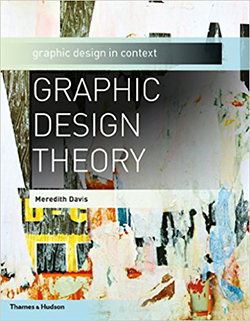 Graphic Design Theory by Meredith Davis
Graphic Design Theory by Meredith DavisDavis, one of the preeminent communications design thinkers and educators, who's led the Designer of 2015 and Designer of 2025 studies for AIGA, wrote the first truly comprehensive introduction to the theory of graphic design. It examines “visual representations as a system of signs and models, to the social, cognitive approaches to design.” In other words, reading it will situate design in the larger domain of communications, and make you more cognizant of design’s role in the world around you.
From AIGA Eye on Design editors
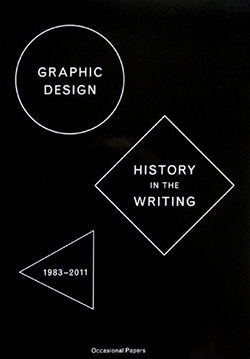 Graphic Design: History in the Writing edited by Catherine de Smet and Sara De Bondt
Graphic Design: History in the Writing edited by Catherine de Smet and Sara De BondtWhat's a great piece of design without context? This volume of graphic design writing chronicles the field from 1983 to today, underscoring theoretical, political, and social tensions. It includes writing by many of the greats, including Teal Triggs, Johanna Drucker, Ellen Lupton, Jeremy Aynsley, and Massimo Vignelli. Anything released by this book's publisher, the UK-based Occasional Papers, is sure-fire Christmas stocking gold for the design and architecture enthusiast.
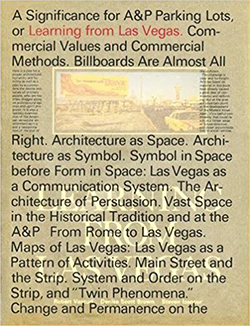 Learning from Las Vegas by Denise Scott Brown and Robert Venturi
Learning from Las Vegas by Denise Scott Brown and Robert Venturi Art directed by Muriel Cooper at MIT Press in 1972, this large-format hardcover is wrapped in a translucent glassine, with the interior layout designed to make the reader feel as if they are moving through a city of text and images. For the authors, the design was as controversial as the book itself. Scott Brown felt it diverged too much from the subject and took attention away from the text, and the first edition fell out of print. Now it's back—so buy it for someone who will ogle over the design (if they actually want to read it, the more common 5x7” paperback is probably better).
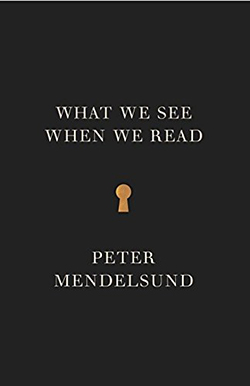 What We See When We Read by Peter Mendelsund
What We See When We Read by Peter Mendelsund The beloved book cover designer uses illustrations, graphics, and writing to investigate what’s actually going on in our minds when we’re deep in a riveting story. Formatted as a series of visual essays that bleed together to create a uniquely dreamy reading and seeing experience, the book itself is one of the best cases for how design can not just mirror a story’s themes, but enhance them.
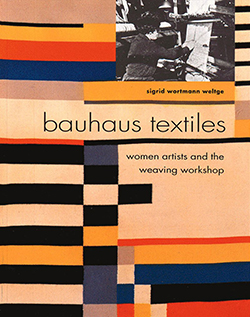 Bauhaus Textiles by Sigrid Weltge-Wortmann
Bauhaus Textiles by Sigrid Weltge-WortmannOriginally published in 1993 under the title Women's Work, this history of the wholly original graphic weavings created by the women of the Bauhaus was republished in 1998 under this new title. Whatever it’s called, it’s as hard to top as it to find; copies are in very short supply—perfect for the hard-to-impress Bauhaus enthusiast on your list who has every Modernist knick knack known to woman.
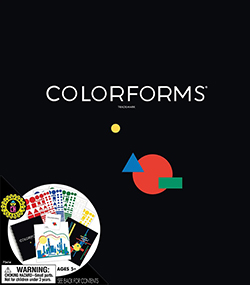 Colorforms
ColorformsWhile not technically a book, this incredible mid-century children’s toy feels perfectly at home on any adult designer’s bookshelf. If you played with this set a kid, you’ll immediately feel the warm fuzzies when you unwrap the kit, which (thankfully) hasn’t been updated since its original release. What designer of any age can’t get down with using these geometric stickies to create cityscapes, abstract compositions, or mini Mondrians?
